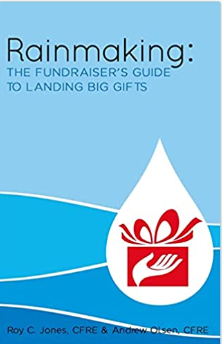There are huge differences between capital campaign donors and major donors. Of course, there are a few donors who will give to both types of initiatives, but very few. Make no mistake about it there are different motivations for both types of giving that usually translate into two distinct groups of people.
First and foremost, capital campaign donations usually happen from people outside the charity’s donor base. That is right… new donors. Capital campaign givers have an innate desire to leave a legacy. They want to see the family name stand in perpetuity, stand forever and usually on the face of a very large building. Capital campaign donors have an affinity to brick and mortar projects. They want to build things that their children, grandchildren and great grandchildren will see long after they have departed this earth.
Nationally 75% of all funds raised for capital campaigns originate from new donors who have an affinity for building (not necessarily, the organizition or cause). Of the remaining 25% nearly half of them originated or came on the “house file” through a previouse capital campaign project.
This is why all capital campaigns begin with the “silent phase”. Best practices in the industry call for obtaining “leadership gifts” from capital campaign donors before reaching into your donor file to solicit a gift from your regular donors.
Major donors are individuals whose support is driven by their commitment to the charity or cause. Most major donor usually originate as a regular donor who have given $100 or less through the mail or internet. Over time these donors upgrade their giving to the $1,000+ level. Once they reach the $1,000 level, those with capacity (wealth), upgrade to the $5,000 and $10,000 level very quickly. Gifts of $10,000, $25,000, $50,000 and more usually only occure after relationships are developed through face-to-face meetings. Events may create the opportunity but face-to-face meetings. However, relationship building that cultivate major gifts happens best one-on-one.
Major donors, unlike capital campaign donors, want to see their money used to impact the cause immediately. They view their giving as an investment and will upgrade giving if they see a demonstrated return on their investment.
Listed below are some “best practices” for launching a capital campaign:
Preparation (months 1-2):
Conduct a feasibility study to assess what is appropriate for the campaign given the particulars of the project. Additionally, a calendar of events, deadlines and deliverables is developed. In most cases you would use an outside consultant to conduct the study with area philanthropists, business leaders and individual donors with six figure capacity. The campaign can be launched and staffed by senior staff, but capital campaign donors are very savvy and will express concerns, especially if an outside consultant is not used.
- Design the program
- Build an organization (of people to run the campaign)
- Identify donors for involvement
Leadership Development (months 2-3)
Identify what skills, talents and resources are needed. Select the team leaders and educate the committee as well as the officers.
- Enlist leaders
- Train leadership
- Target prospective donors
Involvement (months 3-4):
Team leaders form their teams and organize their efforts. Maximum involvement leads to ownership and ownership leads to commitment.
Inspiring action (months 4-5):
Emphasis on stewardship and service through active communication to all facets of the not-for-profit. Tailor communications to different groups within the organizational structure.
Receiving commitments (month 6):
Celebratory event with a strong tone set by the silent phase pledges. This will be the public launch to begin soliciting gifts from your regular donors.
Follow-up (month 7 and beyond):
Ensure maximum participation from the entire donor file. Providing stewardship updates online and in your written communication. Recognize donors and donations as they happen.


